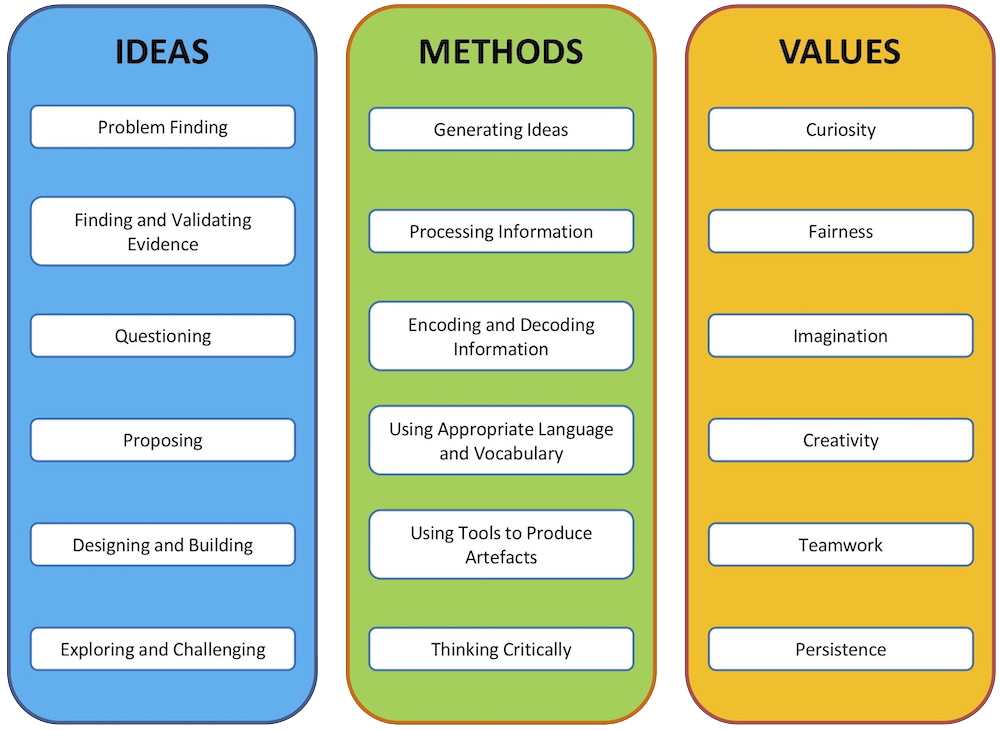STEM Practices
Discover the Ideas, Methods and Values that underpin STEM and how these link to the EYLF.

What are STEM Practices?
STEM Practices framework
Ideas, Methods and Values
STEM Practices looks at STEM holistically, identifying what the disciplines (science, technology, engineering and mathematics) have in common.
A STEM practice involves the use of an Idea, Method, or Value to achieve something.
For example, a STEM:
- Idea may be ‘problem finding’ or ‘exploring and challenging’
- Method may be ‘generating ideas’ or ‘thinking critically’
- Value may be curiosity or persistence
These Ideas, Methods and Values link directly to the Early Years Learning Framework (EYLF) outcomes.

The EYLF and STEM Practices
The EYLF aims for children to develop:
- dispositions (we say Values) such as curiosity, cooperation, confidence, creativity, commitment, enthusiasm, persistence, imagination and reflexivity
- a range of learning and thinking skills and processes (we say Ideas), such as problem solving, inquiry, experimentation, hypothesising, researching, and investigating
- skills using digital tools, making predictions, using representations (we say Methods)
Why STEM Practices are useful in early learning
STEM Practices address the needs of STEM education in early learning settings a number of ways:
- A STEM practices approach overcomes the arguments around approaches to STEM education as it focuses on all curriculum areas, both within STEM and in other areas of the curriculum.
- Edcuators feel comfortable in using STEM Practices as they don’t require specialist subject knowledge and can, in fact, be applied in all subject areas.
- STEM Practices, because they are context bound, meet the individual needs of any child. This enables children to relate to what is being taught, by starting with what they know and building outwards from that.
- Educators can easily involve families and the broader community, as examples of STEM Practices are found everywhere. This, therefore, has the advantage of increasing the value placed on STEM and understanding of STEM applications.
